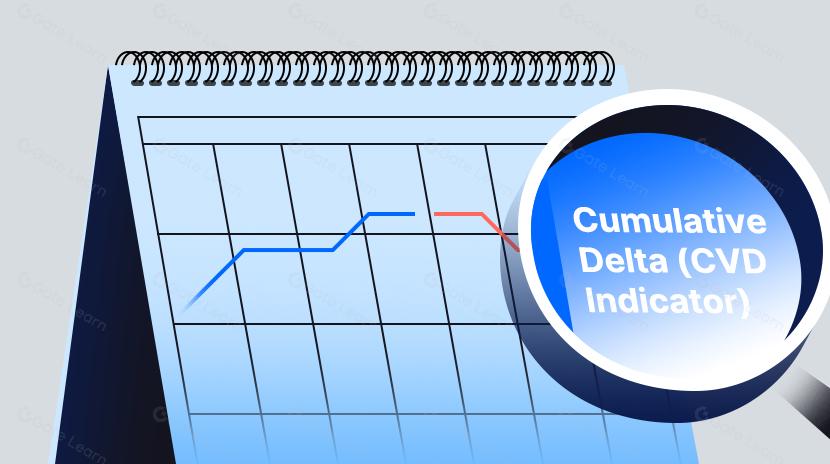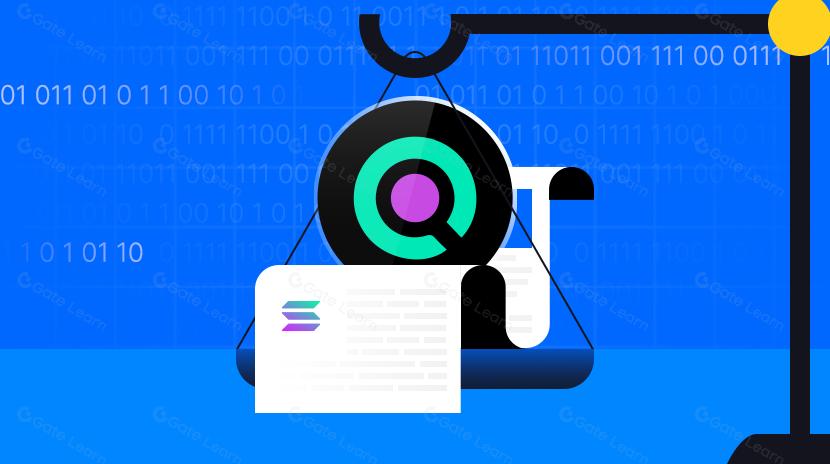Исследование конфиденциальных пулов: новая парадигма конфиденциальности на цепочке, поддержанная Виталиком Бутериным
1. Введение: Парадокс конфиденциальности против соблюдения требований
С момента появления технологии блокчейн децентрализация и прозрачность были ее основными принципами. Однако эта же прозрачность вызвала контроверзию. Поскольку каждая ончейн транзакция общедоступна, финансовые действия пользователей полностью открыты, вызывая беспокойство относительно права на индивидуальную конфиденциальность. Для разрешения этого напряжения появились протоколы, такие как Tornado Cash, обеспечивающие анонимность транзакций через смешивание средств. Но в 2022 году Министерство финансов США наложило санкции на Tornado Cash, что стало значительным сдвигом, поскольку регулирующие органы начали принимать жесткую позицию по отношению к решениям приватности на основе блокчейна. Это событие вывело на передний план текущий дебаты между конфиденциальностью и соблюдением регулирования в рамках крипто-дискуссии.

Министерство финансов США добавляет Tornado Cash в список санкций. Источник:сайт OFAC, 08.22.2022
В ответ на это Виталик Бутерин и другие предложили новый подход: Privacy Pools — механизм, разработанный для защиты конфиденциальности пользователей, используя криптографические методы для различия между законными и незаконными средствами, что потенциально открывает путь для более дружественных к регулированию конфиденциальных решений.
2. Обзор конфиденциальных пулов

Источник: Сайт 0xbow
Privacy Pools - это протокол смарт-контракта, объединяющий доказательства нулевого знания с дружественной к соблюдению фильтрацией, чтобы предоставить пользователям более тонкий контроль над своей конфиденциальностью. Виталик Бутерин и группа исследователей и инженеров предложили его в 2023 году, после чего команда 0xbow разработала и запустила его на основной сети Ethereum в апреле 2025 года.
В отличие от метода анонимности “черного ящика” Tornado Cash, Privacy Pools вводит[1] два ключевых нововведения: Ассоциативные наборы и Поставщики ассоциативных наборов (ASP).
- Пользователи могут создать доказательство нулевого знания, показывающее, что их вывод принадлежит к "соответствующей группе", не раскрывая свою полную историю транзакций.
- ASP определяют, какие адреса можно доверять, и какие источники следует исключить.
- Эта настройка позволяет пользователям сохранять конфиденциальность, сохраняя возможность доказать законность своих средств по необходимости (например, регуляторам или платформам).
Виталик называет этот дизайн «Разделяющим равновесием»: честные пользователи могут доказать, что их средства не связаны с незаконной деятельностью, в то время как злоумышленники не могут предоставить тот же доказательство.
3. Теоретическое основание: Исследования команды Виталика
В 2023 году Виталик Бутерин вместе с Джейкобом Иллюмом (главным ученым в Chainalysis) и профессором Фабианом Шэром из Университета Базеля соавторствовали исследовательскую статью под названиемКонфиденциальность блокчейна и регулирование соответствия: к практическому равновесию. В статье исследуется, как поставщики наборов ассоциаций (ASPs) могут помочь направить конфиденциальность on-chain к модели, соответствующей требованиям соблюдения.
Авторы утверждали, что протоколы конфиденциальности не противоречат регулированию. Напротив, криптографические инструменты могут обеспечить конфиденциальность, ограничивая возможности для незаконной деятельности. Основные выводы из статьи включают:
- Анонимность не исключает проверяемого соблюдения;
- Доказательства с нулевым разглашением позволяют пользователям доказать законность без раскрытия чувствительных деталей;
- ASP могут направлять пользователей на добровольное согласие на соблюдение конфиденциальных путей.
Эти исследования заложили академическое основание для проектирования и разработки Privacy Pools.
4. Разработка и развертывание: Команда 0xbow и экосистема
Реальное внедрение Privacy Pools было проведено командой в Gate.com 0xbow, группа, ориентированная на создание технологий конфиденциальности, соответствующих регуляторным стандартам. В команду входят опытные разработчики, исследователи и координаторы сообщества, такие какЗак Коул(автор EIP-6968 и сооснователь проекта corn) иАмин Солеймани(сооснователь Reflexer Finance). Среди советников и сторонников проекта Виталик Бутерин, Number Group, BanklessVC и Public Works.

Источник: Веб-сайт 0xbow
С самого начала команда подчеркивала разработку с открытым исходным кодом и участие сообщества. Весь код полностью доступен на GitHub, позволяя любому желающему его просмотреть, предложить улучшения или даже запустить собственные интеграции фронт-энда. В отличие от традиционных закрытых моделей разработки, этот прозрачный подход способствует сотрудничеству и стимулирует постоянные инновации — как технически, так и с точки зрения соблюдения нормативов.
5. Как работают конфиденциальные пулы: упрощенный обзор

Источник:Официальный сайт Privacy Pools
Privacy Pools работает через три ключевых этапа — Депозит, Верификация и Вывод — каждый из которых разработан для балансировки конфиденциальности и соблюдения правовых норм.
- Подключите кошелек & Создайте конфиденциальный кошелек: Пользователи начинают с подключения совместимого кошелька (например, MetaMask). Затем система создает отдельный конфиденциальный кошелек 0xbow для частных взаимодействий (пользователи должны надежно сохранить свою сид фразу).
- Пополните средства в конфиденциальный пул: пользователи вносят ETH в пул смарт-контрактов. После подачи заявки поставщики Ассоциации (ASPs) проверяют источник средств. В анонимное множество принимаются только депозиты, соответствующие стандартам соответствия.
- Обзор ASP & Формирование набора ассоциаций: ASP оценивают поведение пользователей on-chain на основе заранее определенных критериев. Они непрерывно обновляют "совместный набор ассоциаций", фильтруя и поддерживая группу проверенных участников.
- Создание доказательства нулевого разглашения (ZKP): Во время вывода браузер пользователя генерирует ZKP, доказывающее, что вывод происходит из соблюдающей группы, не раскрывая конкретные детали транзакции.
- Выполните частный вывод: После проверки доказательства средства отправляются на выбранный пользователем адрес получателя, обеспечивая безопасный и конфиденциальный вывод.

Диаграмма рабочего процесса конфиденциальных пулов. Источник: участник Gate Learn Макс.
6. Объяснение технической архитектуры
Архитектура[2] Privacy Pools построена на трех основных слоях:
1. Уровень смарт-контрактов
Основные функции: хранение активов, запись состояния, выполнение транзакций
Это базовый уровень системы, развернутый на основной сети Ethereum. Он обрабатывает всю логику, связанную с взаимодействием с активами, и может рассматриваться как "бухгалтер и исполнитель" Приватных Пулов.
Его основные обязанности включают:
- Управление депозитами и выводами пользователей;
- Проверка представленных нулевых доказательств (ZKPs);
- Запись потока средств ввода и вывода из пула;
- Получение корневого узла Меркля набора ассоциации;
- Обработка обновлений пула и переходов состояний.
Пример:
Когда Пользователь A вносит 0.5 ETH, контракт регистрирует транзакцию и генерирует уникальный «анонимный идентификатор токена», который присоединяется к набору анонимности. Когда A инициирует вывод, они генерируют доказательство нулевого знания и представляют его контракту. После проверки контракт выпускает средства. Этот уровень не оценивает, являются ли средства «чистыми» или «грязными», он просто выполняет правила, подобно системе back-office банка, которая следует процедурам без суждений.
2. ZK Layer (Слой нулевого разглашения)
Основные функции: защита конфиденциальности, невозможность связывания, самоподтверждающее соответствие
Этот слой служит в качестве конфиденциального двигателя системы. Он использует технологию zk-SNARKs (Zero-Knowledge Succinct Non-Interactive Arguments of Knowledge), позволяя пользователям доказать свое членство в законной депозитной группе, не раскрывая своей личности или истории транзакций.
Что такое zk-SNARK?
Простыми словами, это криптографический инструмент, который позволяет вам доказать, что утверждение верно, не раскрывая каких-либо подтекстовых данных.
В контексте Приватных Пулов zk-SNARKs позволяют пользователю сказать:
«Я вывожу средства из этого пула, и деньги, которые я вывожу, идут из легитимной группы депозитов… Но я не скажу вам, кто я такой, сколько я внес, или с кем я связан.
Процесс ZKP работает так:
- Ввод: Локально хранятся личные данные депозитов пользователя (например, идентификатор депозита, временная метка и т. д.);
- Цель: Доказать, что эти данные принадлежат законному, соблюдающему нормы набору;
- Вывод: Краткое, высоконадежное математическое доказательство;
- Проверка: Умный контракт быстро проверяет, действителен ли доказательство.
Реальный мир аналогия: Представьте, что Сотрудник A хочет войти в офисное здание, но не хочет раскрывать свою личность. Вместо того, чтобы показать удостоверение личности, он представляет криптографическое доказательство, которое говорит: "Я - проверенный сотрудник". Администратор принимает доказательство, пускает его, но никогда не видит их имени, номера значка или отдела.
3. Уровень ASP (Поставщики наборов ассоциаций)

Как работают ASP. Источник:0xbow.io
Основные функции: Оценка соответствия, определение группы, фильтрация рисков
Этот уровень является основным компонентом, который позволяет Privacy Pools предлагать регуляторам дружественную конфиденциальность.
Поставщики наборов ассоциаций (ASP) действуют как нейтральные онлайн-репутационные системы. Они не контролируют пользовательские средства или доступ к личным данным, а вместо этого предоставляют надежные наборы адресов депозитов на основе анализа поведения и критериев соответствия.
Основные обязанности ASPs:
- Анализировать активность on-chain, чтобы определить, является ли адрес "доверенным";
- Определите совместимые анонимные наборы (представленные в виде деревьев Меркля);
- Опубликуйте корень Меркля каждого набора на цепи;
- Предоставляйте проверяемые структуры наборов для использования в доказательствах конфиденциальности.
Как строятся ASP:
- На основе правил: Например, "исключая все транзакции, связанные с санкционированными адресами";
- Методы машинного обучения: Оценка адресов на основе поведенческих шаблонов, например, частые взаимодействия с DeFi указывают на более низкий риск;
- Управление сообществом: Использование DAO для голосования за адреса, которые считаются надежными.
Думайте о ASP, как о пунктах контроля на аэропортах. Им не нужно знать личность пассажира, но они могут определить, кого пропустить, исходя из того, несет ли кто-то запрещенные предметы или проявляет подозрительное поведение.

Трехуровневая архитектура строит мост между конфиденциальностью и соответствием. Источник: Gate Learn Contributor Max
7. Оценка рисков регулирования
В то время как Privacy Pools представляет собой рамки для соблюдения регулирования, существует несколько рисков с точки зрения регулирования:
- Централизация АСП: если определенные АСП контролируются определенными сущностями, это может привести к злоупотреблению скрининговой власти или селективному применению закона;
- Правила равного доступа: Как мы можем обеспечить, чтобы критерии, установленные поставщиками услуг приложения (ASPs), были справедливыми, прозрачными и технологически нейтральными? Существует ли риск непреднамеренного исключения законных пользователей?
- Вызовы соблюдения международных норм: Определения "конфиденциальности" и "соблюдения" различаются в разных юрисдикциях. Как Privacy Pools будут соответствовать глобальным стандартам, таким как GDPR, FinCEN или фреймворк VASP Гонконга?
- Отсутствие механизмов ответственности: если средства неправильно отмечены как "несоответствующие" и пользователи не могут их вывести, как им обжаловать? Кто несет ответственность за разрешение споров или компенсацию пользователей?
В результате будущие модели управления приватными протоколами должны рассматривать гибридный подход, который акцентирует децентрализацию, аудитоподготовку и ответственность.

Схема регулирования. Источник: Учебный материал Gate от автора Макс
8. Влияние на сектор конфиденциальности
Запуск Privacy Pools широко рассматривается как начало "Протоколов конфиденциальности 2.0". Его значение заключается не только в технических инновациях, но и в переосмыслении стереотипа, что "конфиденциальность равна нелегальности".
- Более строгое регулирование: может увеличить принятие протоколов конфиденциальности централизованными биржами и платежными поставщиками;
- Переопределение DeFi: Конфиденциальные пулы могут быть встроены в качестве модульного слоя конфиденциальности в Layer 2s, DApps, платформы кредитования, DEXs и мосты межцепочечной связи;
- Стандартизация приватности вождения: модель ASP может быть интегрирована в проекты, такие как Zcash и Aztec, для установления отраслевых стандартов.
9. Сравнение с другими протоколами конфиденциальности

Сравнение протоколов конфиденциальности. Источник: Gate Learn участник Max
Среди существующих решений приватные пулы в настоящее время являются единственным протоколом, который явно интегрирует модуль соответствия на уровне проектирования. Его позиционирование ближе к приватному промежуточному программному обеспечению на цепочке, а не к традиционному миксеру монет.
10. Перспективы и вызовы в будущем
Краткосрочные вызовы:
- Рост экосистемы ASP: построение открытой, автономной и разнообразной сети ASP с открытым исходным кодом критически важно для успеха протокола
- Обучение пользователей и интеграция кошелька: Улучшение понимания пользователей Нулевыми доказательствами (ZKP), стимулируя при этом принятие поставщиков кошельков (например, интеграцию MetaMask)
Долгосрочные вызовы:
- Мировое соблюдение регулирования: разработка унифицированного интерфейса, который работает в различных юрисдикциях по всему миру
- ASP Governance DAO Design: Определение того, кто устанавливает критерии допуска ASP и механизмы наказания, с потенциальной реализацией систем репутации и штрафов на основе ставок
11. Заключение
Privacy Pools представляют собой революционное переосмысление философии конфиденциальности блокчейна. Вместо того чтобы акцентироваться на «абсолютной анонимности», она строится на принципе «управляемой конфиденциальности + самодоказательства соблюдения». Инвестиции Виталика Бутерина в этот проект - не совпадение, - они соответствуют его видению долгосрочной эволюции Веб3: без конфиденциальности все превращается в постоянную борьбу за то, «что другие люди (и боты) подумают о том, что я делаю». [3]
Если Tornado Cash был оплотом для сторонников конфиденциальности, Privacy Pools - это полигон для реалистов. Хотя это не идеальное решение, оно предлагает прагматичный путь вперед, который может помочь протоколам конфиденциальности наконец-то выйти из регуляторного лимба и сделать шаг к массовому принятию.
Похожие статьи

Что такое Tronscan и как вы можете использовать его в 2025 году?

Что такое индикатор кумулятивного объема дельты (CVD)? (2025)

Что такое Нейро? Все, что вам нужно знать о NEIROETH в 2025 году

Что такое Solscan и как его использовать? (Обновление 2025 года)

Лучшие криптовалютные лотерейные платформы на 2024 год


